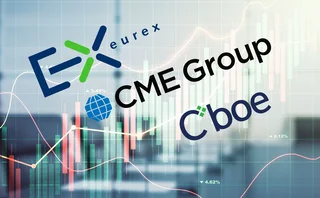

Custody battle: competing tensions put IM prep in jeopardy
Conflicting custody interests and delayed docs call IM phase five readiness into question
The line is drawn. For more than 300 firms, the deadline to start exchanging initial margin on non-cleared derivatives is now just seven months away. And nerves are starting to jangle.
Funds need to select custodians and negotiate new documents for their collateral arrangements. But some custodians’ reluctance to support a new model for receiving collateral – and delays in publishing new custody agreements – are stalling preparations. It’s heightening fears of a logjam as the deadline for the
Only users who have a paid subscription or are part of a corporate subscription are able to print or copy content.
To access these options, along with all other subscription benefits, please contact info@risk.net or view our subscription options here: http://subscriptions.risk.net/subscribe
You are currently unable to print this content. Please contact info@risk.net to find out more.
You are currently unable to copy this content. Please contact info@risk.net to find out more.
Copyright Infopro Digital Limited. All rights reserved.
As outlined in our terms and conditions, https://www.infopro-digital.com/terms-and-conditions/subscriptions/ (point 2.4), printing is limited to a single copy.
If you would like to purchase additional rights please email info@risk.net
Copyright Infopro Digital Limited. All rights reserved.
You may share this content using our article tools. As outlined in our terms and conditions, https://www.infopro-digital.com/terms-and-conditions/subscriptions/ (clause 2.4), an Authorised User may only make one copy of the materials for their own personal use. You must also comply with the restrictions in clause 2.5.
If you would like to purchase additional rights please email info@risk.net
More on Markets
Ice’s AFX swoop shines spotlight on Ameribor prospects
CEO John Shay steps down after exchange group buys firm for mortgage and index synergies
Franklin Templeton dethrones MSIM as top FX options user
Counterparty Radar: MSIM continued to cut RMB positions in Q3, while Franklin Templeton increased G10 trades
Lenders scramble to get ahead of Italian fallback mandate
New law requiring robust fallbacks for Euribor will take effect on January 10
FX automation key to post-T+1 success, say custodians
Custody banks saw uptick in demand for automated FX execution to tackle T+1 challenges
Review of 2024: as markets took a breather, firms switched focus
In the absence of major crises and rules deadlines, financial firms revamped strategy, services and practices
Cboe plans Q2 dispersion futures listing
Expectations of post-US-election uncertainty drives launch, and could help bank equity desks hedge OTC risks
Futures exchanges look to ride credit ETF wave
Proponents hope for increased buy-side trading, with three exchanges competing for market share
Doubts raised over new FX platform disclosures
New disclosure sheet template will require platforms to outline how they charge for data








